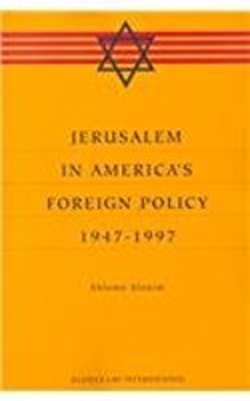 Whatever one's views on Jerusalem, there is widespread consensus that American policy toward the holy city has remained in amber since the 1940s. That was when the State Department maneuvered to get the quaintly named corpus separatum installed as the seemingly permanent objective of American policy in Jerusalem (namely, Jerusalem would not fall under Arab or Israeli control but would be administered separately by a Western power). This goal reflected the long-ago Christian ambition to retain temporal control over the city. That hope has in the succeeding decades receded, but still the 1940s policy lives on.
Whatever one's views on Jerusalem, there is widespread consensus that American policy toward the holy city has remained in amber since the 1940s. That was when the State Department maneuvered to get the quaintly named corpus separatum installed as the seemingly permanent objective of American policy in Jerusalem (namely, Jerusalem would not fall under Arab or Israeli control but would be administered separately by a Western power). This goal reflected the long-ago Christian ambition to retain temporal control over the city. That hope has in the succeeding decades receded, but still the 1940s policy lives on.
Not so, says Slonim, who teaches American Studies at The Hebrew University of Jerusalem. Instead, he posits four distinct eras of U.S. policy and within that framework many different specific policies. The shortest period (but by far the one paid the most attention in his book) was under Harry S Truman, 1947-50, when the drive for internationalization took place. Slonim then touches very lightly on the "dormant interlude" of the city's division, 1951-67, when Washington pretty much acceded to the status quo. The third period, 1967-93, saw a unification under Israeli auspices and Israeli efforts to win American sanction for its sovereign control over the whole (and expanding) city. The final period began with the Oslo accords and still goes on; it is characterized by an Israel trying to work out its differences over Jerusalem with the Palestinians.
Only by reviewing in detail the whole half century, as Slonim does with care and intelligence, does the extent of the changes become evident. For proof, here is one episode from 1958: Foreign Minister Golda Meir protested to Washington that governments were not relocating their embassies from Tel Aviv to Jerusalem because they feared that doing so "would incur the displeasure of the United States." Only when this point was raised a second time in 1962 did the Kennedy administration agree to desist.